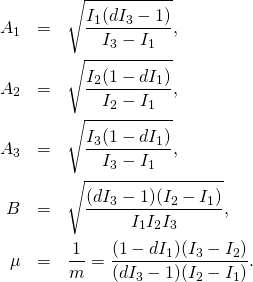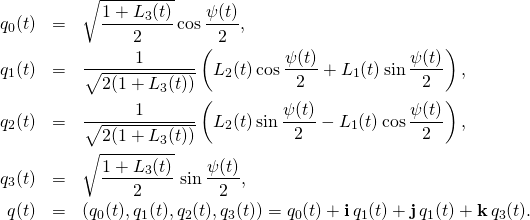I noticed that somehow I did not finish with the case ![]() So today, without further ado, I am posting the algorithm.
So today, without further ado, I am posting the algorithm.
We have the body with ![]() and we are considering the case with
and we are considering the case with ![]() , where
, where ![]() is, as always, the ratio of the doubled kinetic energy to angular momentum squared.
is, as always, the ratio of the doubled kinetic energy to angular momentum squared.
Then we define
(1) 
(2) 
(3) 
(4) ![]()
(5) ![]()
(6) 
(7) 
(8) ![]()
(9) 
I use the above formulas to draw a stereographic projection of one particular path. So, I take ![]() , and do the parametric plot of the curve
, and do the parametric plot of the curve ![]() in
in ![]()
with
![]()
I show below two plots. One with ![]() and one with
and one with ![]() For this selected value of
For this selected value of ![]() the time between consecutive flips, given by the formula
the time between consecutive flips, given by the formula
(10) ![]()
So, for ![]() we have somewhat less than 200 flips, and the lines are getting rather densely packed in certain regions.
we have somewhat less than 200 flips, and the lines are getting rather densely packed in certain regions.
Notice that is just one geodesic line, geometrically speaking the straightest possible line in the geometry determined by the inertial properties of the body.
It is this “geometry”that will become the main subject of the future notes.


How can such a line be “straight”? Well, it is….



